ỨNG DỤNG HƯỚNG DẪN CẮT IN 3D CÁ THỂ HÓA VÀ GHÉP XƯƠNG TỰ THÂN TÁI CHẾ BẰNG NITƠ LỎNG TRONG PHẪU THUẬT BẢO TỒN CHI CHO NGƯỜI BỆNH UNG THƯ XƯƠNG: NHÂN MỘT TRƯỜNG HỢP
Nội dung chính của bài viết
Tóm tắt
Đặt vấn đề: Ung thư xương nguyên phát, đặc biệt là sarcoma tạo xương, thường gặp ở người trẻ tuổi và đòi hỏi phẫu thuật cắt bỏ u triệt căn để đạt hiệu quả điều trị. Phẫu thuật bảo tồn chi là xu hướng hiện nay, trong đó việc sử dụng hướng dẫn cắt in 3D cá thể hóa kết hợp với ghép xương tự thân tái chế bằng nitơ lỏng mang lại nhiều lợi ích. Đối tượng và phương pháp nghiên cứu: Chúng tôi báo cáo một trường hợp bệnh nhân nữ 32 tuổi, được chẩn đoán sarcoma tạo xương đoạn xa xương đùi, điều trị bằng hóa trị tân bổ trợ, phẫu thuật bảo tồn chi với hướng dẫn cắt in 3D và xử lý xương ung thư bằng phương pháp đông lạnh có cuống. Kết quả: Sau 12 tháng theo dõi, bệnh nhân phục hồi tốt, xương ghép ổn định và không có dấu hiệu tái phát. Kết luận: Phương pháp ứng dụng hướng dẫn cắt in 3D cá thể hoá và ghép xương tự thân tái chế bằng nitơ lỏng trong phẫu thuật bảo tồn chi cho người bệnh ung thư xương giúp nâng cao độ chính xác phẫu thuật, duy trì cấu trúc xương tự thân và giảm biến chứng, mở ra hướng đi tiềm năng trong điều trị ung thư xương.
Chi tiết bài viết
Từ khóa
Hướng dẫn cắt in 3D, phẫu thuật bảo tồn chi, ung thư xương, nitơ lỏng, ghép xương tự thân tái chế
Tài liệu tham khảo
2. Aiba, H., et al., Current Concepts in the Resection of Bone Tumors Using a Patient-Specific Three-Dimensional Printed Cutting Guide. Curr Oncol, 2023. 30(4): p. 3859-3870.
3. Aksnes, L.H., et al., Limb-sparing surgery preserves more function than amputation: a Scandinavian sarcoma group study of 118 patients. J Bone Joint Surg Br, 2008. 90(6): p. 786-94.
4. Jeys, L., et al., Can computer navigation-assisted surgery reduce the risk of an intralesional margin and reduce the rate of local recurrence in patients with a tumour of the pelvis or sacrum? Bone Joint J, 2013. 95-b(10): p. 1417-24.
5. Puri, A., A. Gulia, and W.H. Chan, Functional and oncologic outcomes after excision of the total femur in primary bone tumors: Results with a low cost total femur prosthesis. Indian J Orthop, 2012. 46(4): p. 470-4.
6. P Igarashi, K., et al., The long-term outcome following the use of frozen autograft treated with liquid nitrogen in the management of bone and soft-tissue sarcomas. Bone Joint J, 2014. 96-b(4): p. 555-61.
7. Yamamoto, N., H. Tsuchiya, and K. Tomita, Effects of liquid nitrogen treatment on the proliferation of osteosarcoma and the biomechanical properties of normal bone. J Orthop Sci, 2003. 8(3): p. 374-80.
8. Takata, M., et al., Activity of bone morphogenetic protein-7 after treatment at various temperatures: freezing vs. pasteurization vs. allograft. Cryobiology, 2011. 63(3): p. 235-9.
9. Nishida, H., H. Tsuchiya, and K. Tomita, Re-implantation of tumour tissue treated by cryotreatment with liquid nitrogen induces anti-tumour activity against murine osteosarcoma. J Bone Joint Surg Br, 2008. 90(9): p. 1249-55.
10. Nishida, H., et al., Cryoimmunology for malignant bone and soft-tissue tumors. Int J Clin Oncol, 2011. 16(2): p. 109-17.


